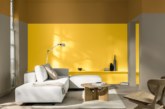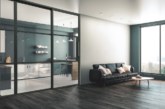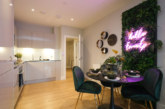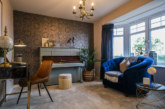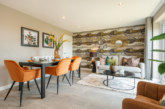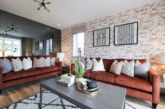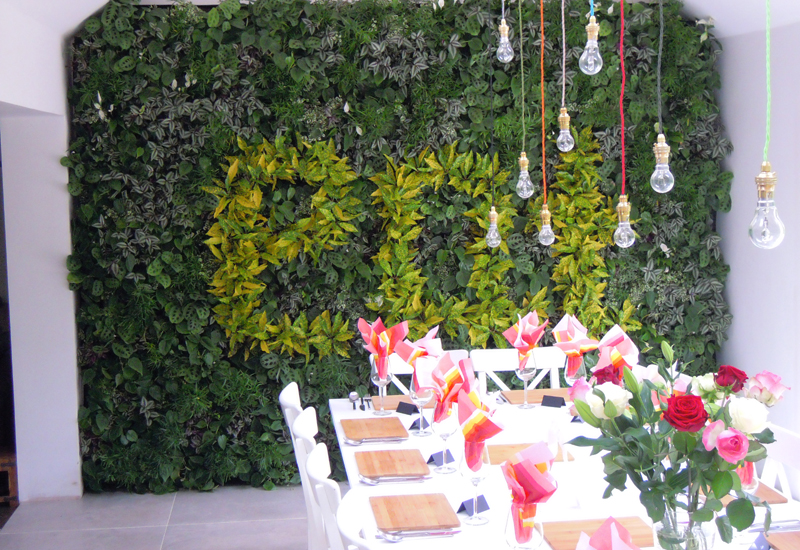
Scott Anderson, Director of ANS Global, discusses how the addition of greenery inside a home fits with interior trends, sustainable design and can enhance property values.
Interior design trends have moved beyond the neutral and simple tones. No longer do property investors need to focus on painting the entire building magnolia. An interesting example of this is the growth of the living walls market.
An entire living wall is made up of individual modules that are installed onto a specially prepared surface via fixing rails and can be fixed to a range of surfaces including steel, timber, plaster and concrete. Therefore, they can be installed almost anywhere there is wall space. Living walls are timeless and are able to adapt as interior design trends develop.
 It is important for those investing in a new build project for residential use to understand current developments in interior design trends. Political or topical issues can have a big influence on building design, and especially now in the wake of global summits discussing the impact of climate change, we have seen sustainable design appear higher up on the agenda. This is showcased by topics such as climate change resulting in air quality, energy efficiency and the loss of green space featuring more and more in building design, especially for residential builds.
It is important for those investing in a new build project for residential use to understand current developments in interior design trends. Political or topical issues can have a big influence on building design, and especially now in the wake of global summits discussing the impact of climate change, we have seen sustainable design appear higher up on the agenda. This is showcased by topics such as climate change resulting in air quality, energy efficiency and the loss of green space featuring more and more in building design, especially for residential builds.
Living walls
Living walls are visually impactful, bringing the benefits of nature into the home and transforming dull, functional areas into indoor gardens. However, there is far more to them than simply making a design statement. They also regulate temperature, balance humidity and clean the air. With Toxic Home Syndrome on the rise in the UK, improving air quality is particularly topical within the housebuilder community.
For example, indoor pollutants such as germs, bacteria and viruses can cause sickness. Toxic Home Syndrome is when a person’s health deteriorates as a result of poor air quality in their home. Sometimes the case is so severe that they develop asthma, but they are also at risk of obesity or even cancer and heart disease. In fact, the World Health Organisation reported that up to 30% of new and remodelled buildings worldwide could be subject to poor indoor air quality.
Living walls are a natural form of air purification, as the plants will absorb pollutants such as carbon dioxide and replace it with oxygen.
Life indoors
According to research published in the Journal of Exposure Science & Environmental Epidemiology, 90% of our time is spent indoors, so it is also no wonder building design is looking more at how interior design can affect our wellbeing. The biophilia hypothesis suggests that humans are “powerfully responsive to nature’s forms, processes, and patterns”. Essentially, simply by being around nature we feel a greater sense of health and wellness.
Environmental benefits of living walls are impressive, too. Living walls help to regulate temperature and balance humidity, which makes them the perfect addition to a house for promoting energy efficiency. As such, living walls perfectly complement this trend of sustainable design.
Especially if building in urban areas, where green space is often lost as result of intensified building development, it is important to consider how the loss of greenery is replenished. By bringing the outside in, living walls are a beautiful way to reinstate a green space in an urban area and demonstrate a developer’s commitment to industry needs as well as customer satisfaction.
Sales boost
It’s good news for the housebuilder, too. Of course the health of the potential occupants is an important factor anyway, but by showing a commitment to providing healthy homes and supporting environmental initiatives it helps to boost sales, too. When designing and planning a new build, specifying a living wall can set housebuilders apart from other developers through an innovative approach to sustainable design. As a result, studies have shown that property values increase by up to 20%, simply by having plants in and around a building.
For increasing property values, there are other notable interior design trends to consider. These include curved walls and customisable interiors. Companies such as ANS Global offer living walls that can adapt to these demands by the consumer and the interior designer. For example, a living wall was installed at the Catlin Group Limited’s London offices. The wall was double sided and worked seamlessly with the curvature of the wall. The team at ANS are used to dealing directly with both architects and property developers, so a similar living wall could be replicated for those planning a residential new build, even if curved walls are heavily featured.
A unique feature
Where furniture brands now offer customers the ability to modify products to a unique specification, living walls can also offer customisation. They can be designed with different species of plants to create unique patterns and designs; a great way to entice potential buyers would be to design a kitchen that incorporates an edible living wall with herbs or strawberries.
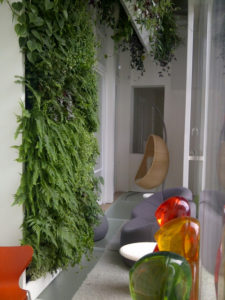 When marketing and selling a home to potential buyers, it is often to consider presentation. This is why interior design can play such a crucial role in a customer making a decision. It isn’t just about selling the aesthetics of a house, it’s about helping the customer to visualise themselves living in the space and selling the lifestyle that comes with it. With homeowners becoming more interested in environmental and health issues, as well as current interior design trends, any new residential development should reflect this in its design.
When marketing and selling a home to potential buyers, it is often to consider presentation. This is why interior design can play such a crucial role in a customer making a decision. It isn’t just about selling the aesthetics of a house, it’s about helping the customer to visualise themselves living in the space and selling the lifestyle that comes with it. With homeowners becoming more interested in environmental and health issues, as well as current interior design trends, any new residential development should reflect this in its design.

